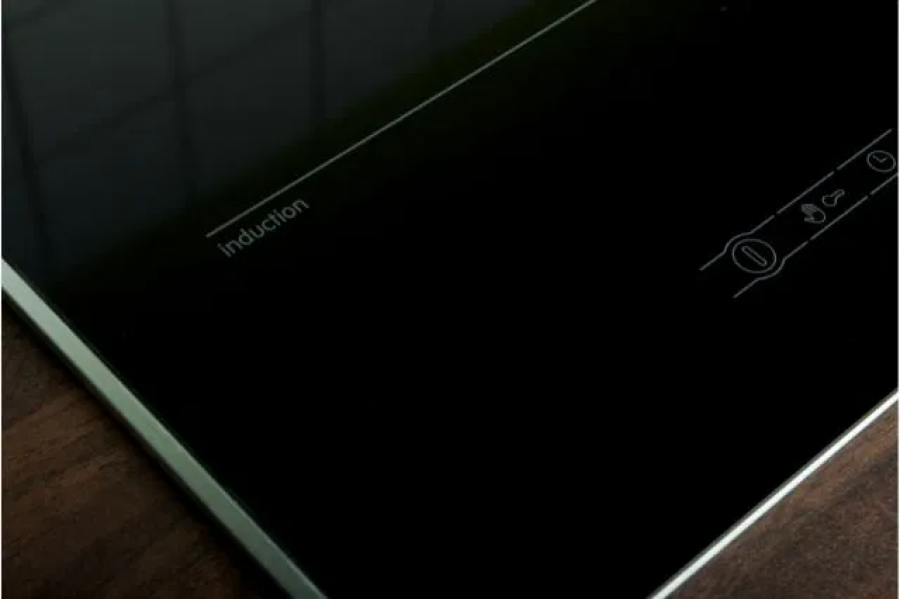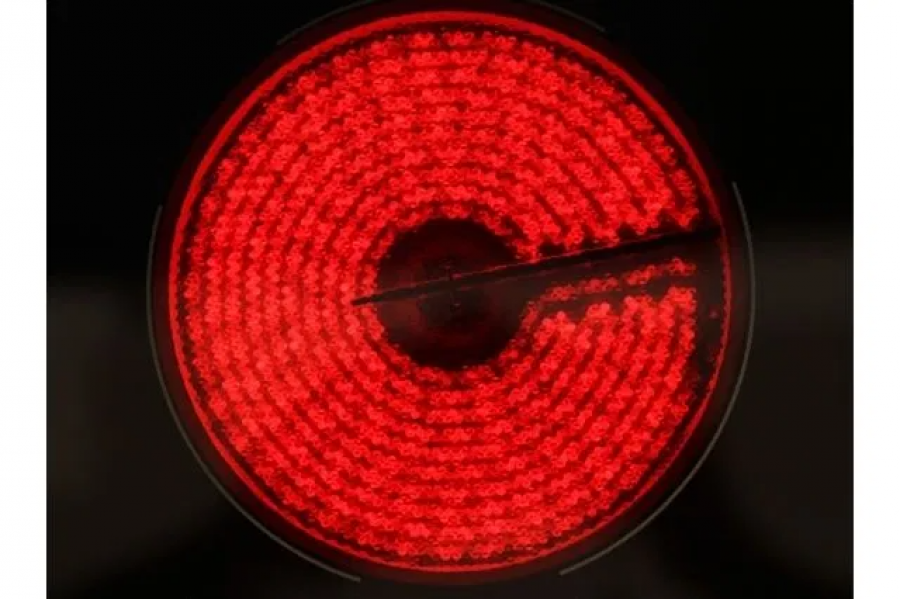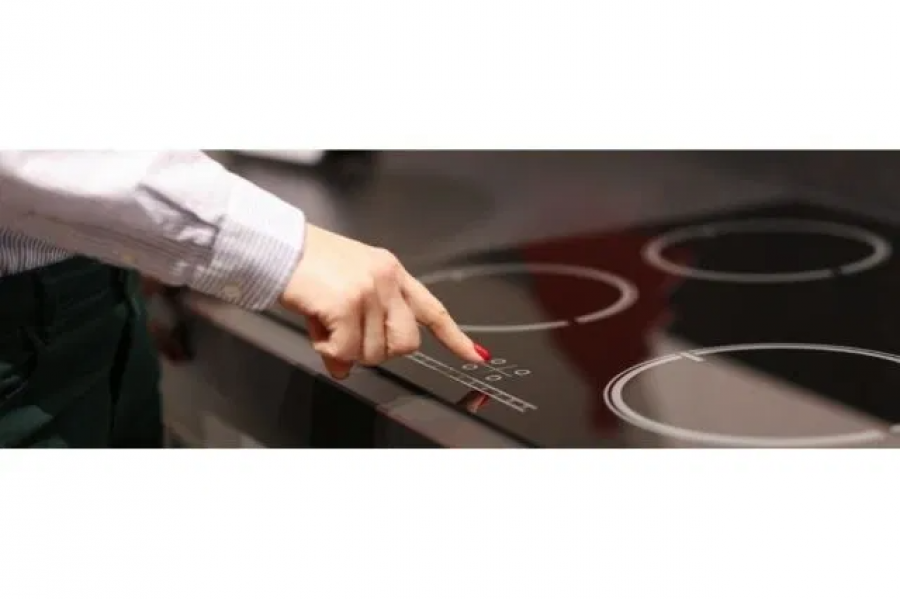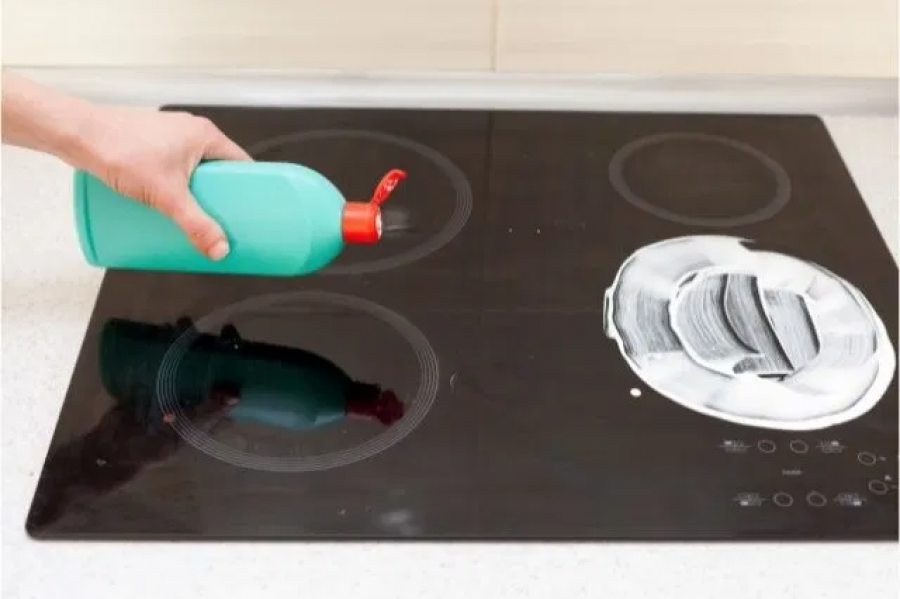Induction cooktops are becoming increasingly popular, as they’re easy to use and versatile. Just like any other cookware, they need require regular cleaning.

So, how does an induction cooktop work? They're powered through an electric magnetic current and can heat your utensils and cook your food directly instead of conventional mediums like gas, electricity, or thermal energy.
There are some extra precautions and different requirements that affect their cleaning. While they are generally easier to clean than conventional cooktops, this kind of cooktop cleaning requires care and attention.
As opposed to traditional cooktop designs, an induction model is simply designed with glass on top and copper wires underneath it. It heats specified cookware and does as wonderful a job as any traditional stovetops.
Induction cooktops are modern and classy. As pretty as they look, they need to be handled with care and special consideration. You shouldn't just scrub away at them like you would a conventional stovetop.
Let’s take a further look at how to ensure you have a clean induction cooktop and protect its glass surface.
How to Clean An Induction Cooker Surface
Are Induction Cooktops Easy to Clean?
Induction cooktops are fairly easy to clean compared to traditional stoves because of the glossy and shiny surface.
Any spills, food, and liquid collected on the surface have low chances of being baked, burnt, or sticking to the glass surface because it does not have a live flame.

And the only part of the glass ceramic surface that is in contact with the pot or a pan is the plate itself. So, if something does spill over the cooktop, it is relatively easy to clean by wiping it away with a soft cloth.
What Should You Not Use as an Induction Stove Cleaner?
When cleaning an induction cooktop, be mindful that you do not use any steel wool to wipe the plate. You should avoid any abrasive cleaners or harsh chemicals as well ,since they can damage your induction cooktop.
Make sure that you let the induction cooktop cool completely before performing any cleaning. Use a soft cloth and a cleaner that is specifically designed to clean induction cooktops. This way you can eliminate any chances of giving it scratches or damaging its original and protective coating.
If you use a cleaning pad, ensure it doesn't have abrasive bristles: often a dry cloth is all it takes to clean the residue from most spills from the glass.
Remove White Marks from Induction Cooktop
Often times after cooking, there is white residue, smudges, or stains collected on top of the glass surface. These can be annoying to look at and can prove to be just as stubborn to get off.
Often, this white residue comes from hard water. Hard water is water with plenty of minerals than can be left behind as residue on the cooktop surface.
The best remedy is to clean or wipe your cooktop after every use so these stains do not build up over time. You can use white vinegar and baking soda to get rid of these stains. White vinegar is acidic in nature and is a natural product, resulting in a nice and shiny clean-up job. Then, use a dry cloth to wipe away any streaks.
A mixture of vinegar and baking soda, when used with a damp cloth, helps remove the build-up and gives your cooktop a fresh look and smell.
How to Care for an Induction Cooktop
Maintaining the quality of your induction cooktop and caring for it is essential for its longevity and durability of its surface. Proper care for an induction stove ranges from the type of cookware you use and the way you clean it.
Whenever you are cooking on your induction cooktop, always make sure that your cookware is not made up of copper, glass, or pyrex. This is because this cookware is heat resistant and does not help much in terms of cooking.

- When the cookware won’t heat up properly, the induction cooktop will automatically put pressure on its system to heat it up further. This way it can end up putting a lot of strain on itself.
- Always remove the cookware whenever you are done cooking, and turn off the heat. This will help prevent any damage or burns to the surface.
- Clean the glass ceramic surface every day and after use with a soft damp cloth.
- Always store your cookware in a clean and dry place after cleaning. Make sure it is dry and cool before putting it away. Moisture can cause rust to develop, which will have a negative impact on your appliance.
Best Induction Cooktop Cleaner
The best way to keep the surface clean may be a simple wipe down after each use with water and paper towel. Like stainless steel, the surface naturally has non-stick properties, so it's often not necessary to use a cleaning pad or toxic, powdery cleaners.

However, sometimes heavy use requires the use of a cooktop cleaner. Using a cooktop cleaner can also mean you don't need to wipe and wipe.
Amongst the best induction cooktop cleaners are:
- Magic Glass Cooktop Cleaner and Polish
- Weiman Glass Cooktop Heavy Duty Cleaner
- Scotch-Brite Scratch Rejuvenating Cooktop Polish
- Bryson Citrushine Glass Cooktop Cleaner
- Cerama Bryte Cooktop Cleaner
These are easily available online and at local stores. They are included in the top-rated products for cooktop cleaners.
FAQs
Q: How Do I Keep Scratches Off My Induction Cooktop?
When purchasing your induction cooktop, make sure that the glass or ceramic is not fragile. Use a microfiber cloth to polish or clean spills shortly after cooking, once the surface has cooled.
Q: Can You Use Windex As an Induction Cleaner?
You should not use Windex or any other glass cleaner on your induction cooktop because it has a high chance of damaging your cooktop.
This is because Windex and other glass cleaners are ammonia-based. Only use the cleaners that are designed for induction cooktop surfaces.
Q: Can You Use Paper Towel On Induction Cooktop?
Yes, you can definitely use a paper towel on an induction cooktop to wipe away spills and food residue.
However, don't use a paper towel as protection when cooking. After all, paper towels can burn and cause residue to build up.
Cleaning Your Induction Cooktop: The Bottom Line
Induction cooktops are gaining a lot of popularity. With more homes opting to buy them instead of using traditional gas-powered stovetops, it is essential that you know how to keep them neat and clean.
Cleaning the surface from spills and food residue using a soft towel or wipe after each use goes a long way towards protecting the surface. Without regular cleaning, food residue and spills can accumulate and harden, necessitating the use of cleaning products.
When cleaning products are necessary, you have to make sure to follow the precautions and use the right cleaning products for cleaning the surface.
Regularly cleaning your induction cooktop and taking care of it can increase its life and help it perform better in the long run!
Happy cleaning!